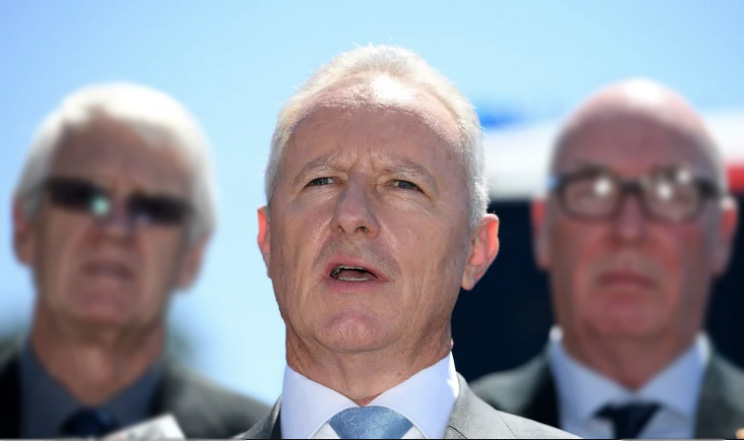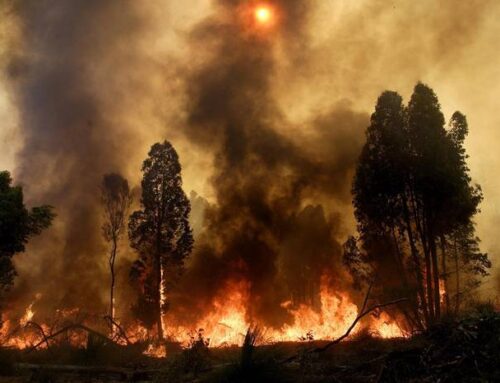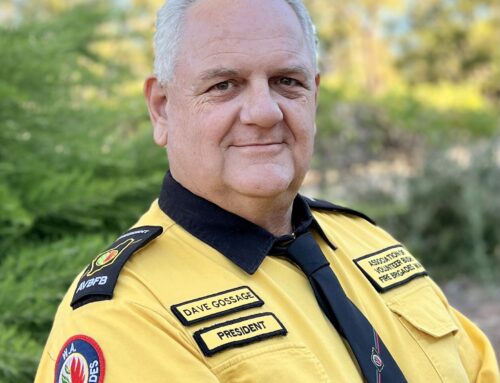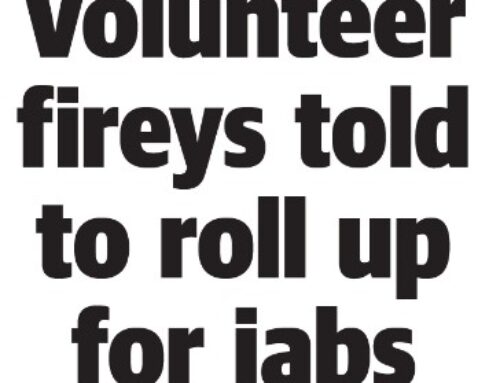Decorated former firefighter and climate action advocate Greg Mullins says current fire chiefs have been effectively gagged from raising the bushfire risks created by global warming with politicians.
Mr Mullins said he had “deep concerns over climate change”, which was fuelling “unprecedented” bushfires in evidence to a Senate inquiry into the 2019-20 bushfire season on Wednesday.
Asked by Victorian Liberal senator James Paterson if he thought “the current serving fire chiefs are gagged in some way”, Mr Mullins replied: “yes”.
Mr Mullins, a former Fire and Rescue NSW commissioner, said when he was in the role “some things were out of bounds and often climate change was one of those issues, even to the point of having to work around it when preparing documents, and I think that is a tragedy”.
Greens senator Janet Rice asked Mr Mullins if it was “still the case” that fire chiefs were discouraged from raising the effect of climate change on bushfire risks with politicians.
“I know it’s the case,” Mr Mullins said. “I’ve had a number of discussions and it’s clear.”
Mr Mullins had a 39-year career in NSW Fire and Rescue, and was appointed commissioner in 2003. He retired in 2017.
Mr Mullins was representing the Emergency Leaders for Climate Action group, which comprises 33 former fire and emergency service leaders from around the country.
“We self-censored because we knew what would be acceptable, and what would not, for certain political masters and if you went outside those bounds life could be made very unpleasant for you,” he said.
The Emergency Leaders for Climate Action unsuccessfully sought meetings with Prime Minister Scott Morrison in April and again in May last year, ahead of the long 2019-20 summer bushfire season about the looming “catastrophic” fire season.
Significantly less property may be have been lost to the fires if the government had heeded their warnings, and moved to secure lease agreements for an expanded fleet of water bombing aircraft ahead of the most recent fire season, Mr Mullins said.
“These aircraft weren’t available and arrived too late,” he said.
Mr Crust revealed it could be five years before “we’ve got a really clear idea of … what the longer term mortality is going to be of individual trees within the population”.
NPWS co-ordinated a last ditch aerial and ground firefighting operation last summer to protect the only known stand of the ‘living fossil’ Wollemi Pines, which date back at least 200 million years, from the Gospers Mountain Fire that would go on to scorch much of the Wollemi National Park.
A mere 200 trees cling on in remote, rugged and deep gorges which have been gouged out of the sandstone escarpment.
Mr Crust is optimistic even though firefighters couldn’t stop the understory burning, because most of the Wollemi Pines’ upper canopy is intact. However, there had been “quite a bit of mortality” among the 200 juvenile trees, but since the fires “many of them are actually re-sprouting now so we’re just going to have to wait and see what the long-term impacts are and if those individual plants… survive”, he said.
Melbourne University ornithologist Rohan Clarke told the commission about the “successful” rescue mission to save the endangered eastern bristlebird as fires bore down on its habitat near the NSW and Victorian border.
About 2000 birds are left in the wild, and just 150 in Victoria. A team of scientists and Victorian Department of Environment staff captured and relocated 15 birds and relocated them to Melbourne Zoo, to be held as an insurance population in case the wild population was wiped out.
Luckily, the fires only licked the edges of the bristlebird’ Victorian habitat. Unfortunately, six of the birds dies from a stress-related fungal disease while in captivity. Seven birds have been returned to the wild and two remain at the zoo.
Dr Clarke said fires did hit bristlebird habitat on the NSW side of the border, and “we don’t know yet how many of those birds… survived”.
https://www.smh.com.au/politics/federal/some-things-were-out-of-bounds-fire-chiefs-gagged-on-climate-change-warnings-to-government-commission-told-20200527-p54wxv.html
Mike Foley






